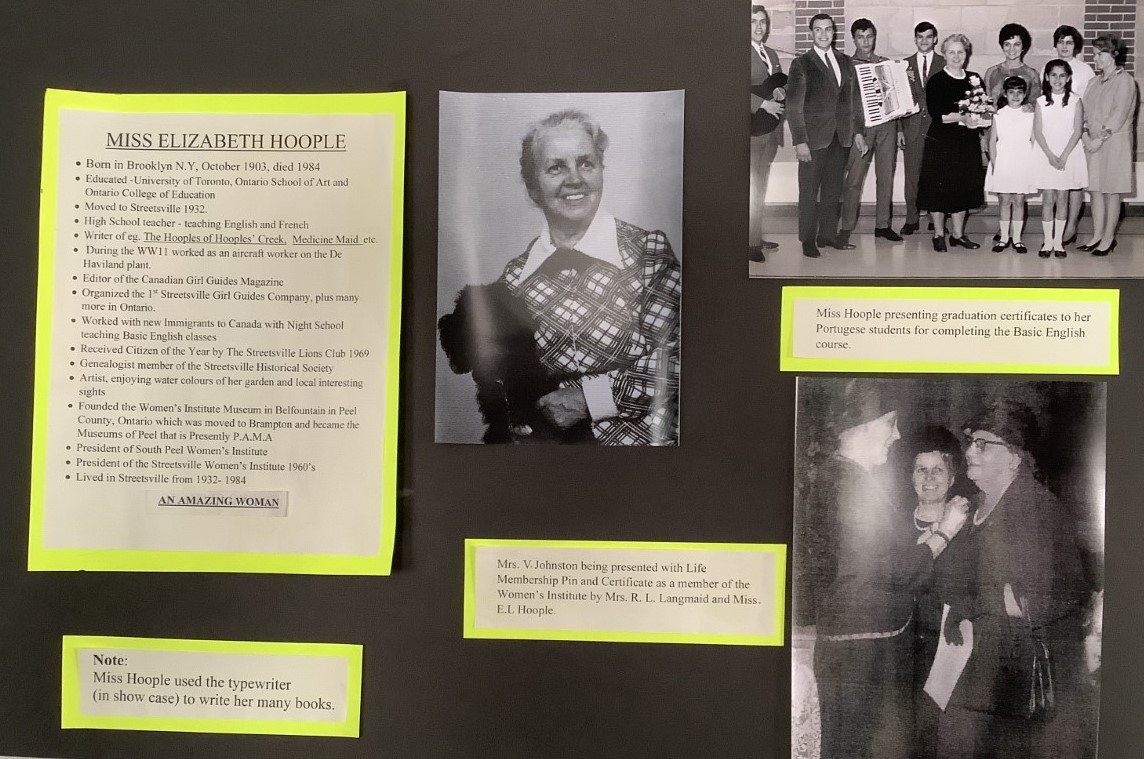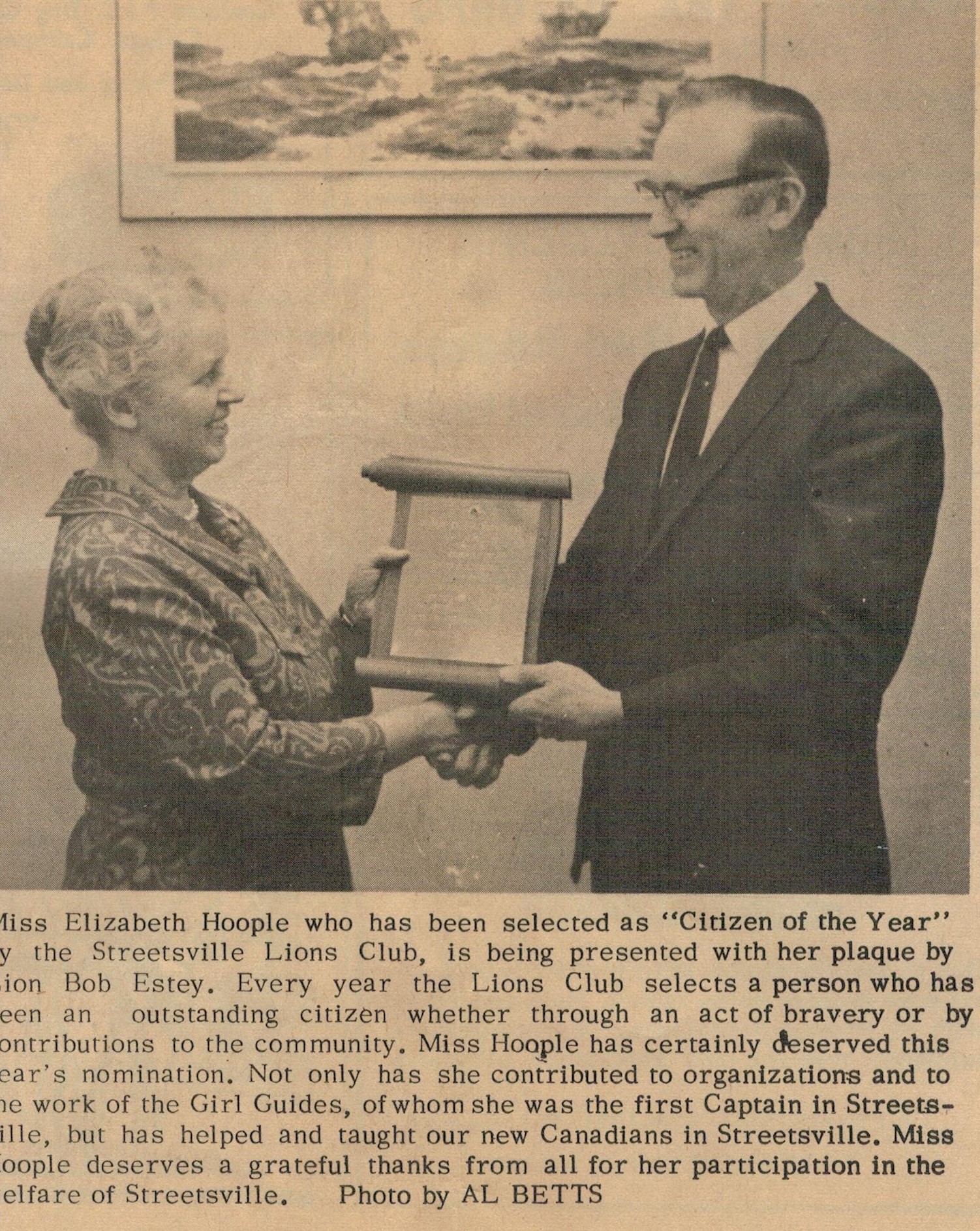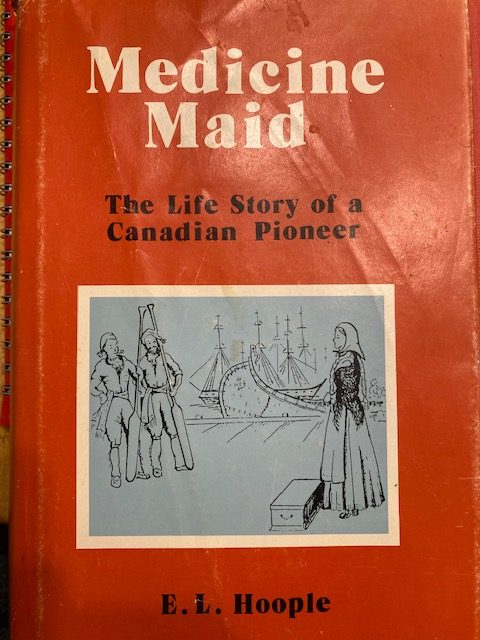Sometimes it takes a team. In sorting through recent book donations at Heritage Mississauga, we came across the book Medicine Maid: The Life Story of a Canadian Pioneer by E.L. Hoople.
I immediately recalled a conversation I had several years ago with Mac Byard of the Streetsville Historical Society about the book and the author. I had meant to read the book way back then, and it had languished on my shelf until I had forgotten.
Seeing the book again amongst our recent library donations brought it back to mind. And yes, I have begun reading it!
But I was also interested to learn more about the author. She was someone I had only heard about, and unfortunately never had the opportunity meet. We had a few tidbits about her in our records at Heritage Mississauga, but not a great deal.
I reached out to both the Region of Peel Archives at PAMA and the Streetsville Historical Society, and in very quick order a fascinating window into the life and times of Elizabeth Hoople opened. Special thanks to Anne and Mac Byard of the Streetsville Historical Society and to Nick Moreau at PAMA for sharing some wonderful material and resources!

Elizabeth Hoople was born in Brooklyn, New York in 1903, the daughter of Dr. Heber Nelson Hoople and Carrie Munson.
She had a brother, Rolf, who passed away in 1928. While born in New York, the Hoople family had strong connections in Northumberland County, Stormont County, and the Cornwall area of Ontario.
Elizabeth came to live with relatives in Toronto where she pursued her education at the Bishop Strachan School, the University of Toronto, the Ontario College of Art, and the Ontario College of Education.
Elizabeth moved to Streetsville in 1931-32 where she taught English, French and art at Streetsville High School.
In 1931 she also founded the 1st Streetsville Girl Guide Company with the assistance of Emma Maas and Mary Crozier. Elizabeth was also instrumental in establishing Girl Guide companies in Erindale and Cooksville.
During the Second World War, Elizabeth worked at the Massey-Harris airplane factory in Weston where wings for the de Havilland Mosquito combat aircraft were manufactured.
After the war years, Elizabeth remained active in the Streetsville community. She was an avid painter and gardener, a beloved supply teacher, a teacher of English as a second language, and a long-time member of Trinity Anglican Church in Streetsville.
Elizabeth was also a member of the Streetsville Historical Society and was involved with the Women’s Institute – she served as the President of the Streetsville Women’s Institute and of the South Peel Women’s Institute.
For her considerable efforts in her community, Elizabeth received the Citizen of the Year Award from the Streetsville Lions Club in 1969.

Elizabeth authored two books: The Hooples of Hooples’ Creek (1967) and Medicine Maid (1977). Both are family histories.

The first is the history of the Hoople family. Their ancestral lands were submerged beneath the St. Lawrence River and connect, in part, to the story of the lost villages of the St. Lawrence Seaway and Upper Canada Village.
The second book is based in part on the stories of Elizabeth’s great great grandmother, Mary Whitmore (Whitmoyer), and the family’s experiences during the American Revolutionary War.
Elizabeth Hoople lived in Streetsville until 1984 and passed away in 1988. Her obituary remembered her as a “warm hearted lady, independent in thought and forthright in speech, who gave so generously of her time and talents.”
What a wonderful tribute! Elizabeth was laid to rest at Park Lawn Cemetery in Toronto, alongside her mother and brother.
A mantle clock once owned by Elizabeth sits on the mantle today at the Leslie Log House, home of the Streetsville Historical Society.

SHS also has her typewriter and other information and images from her life in Streetsville in their collections.
As I make my way through her Medicine Maid book, and as I reflect on Elizabeth’s story, I can honestly say that I wish that I could have met her!




Comments are closed.